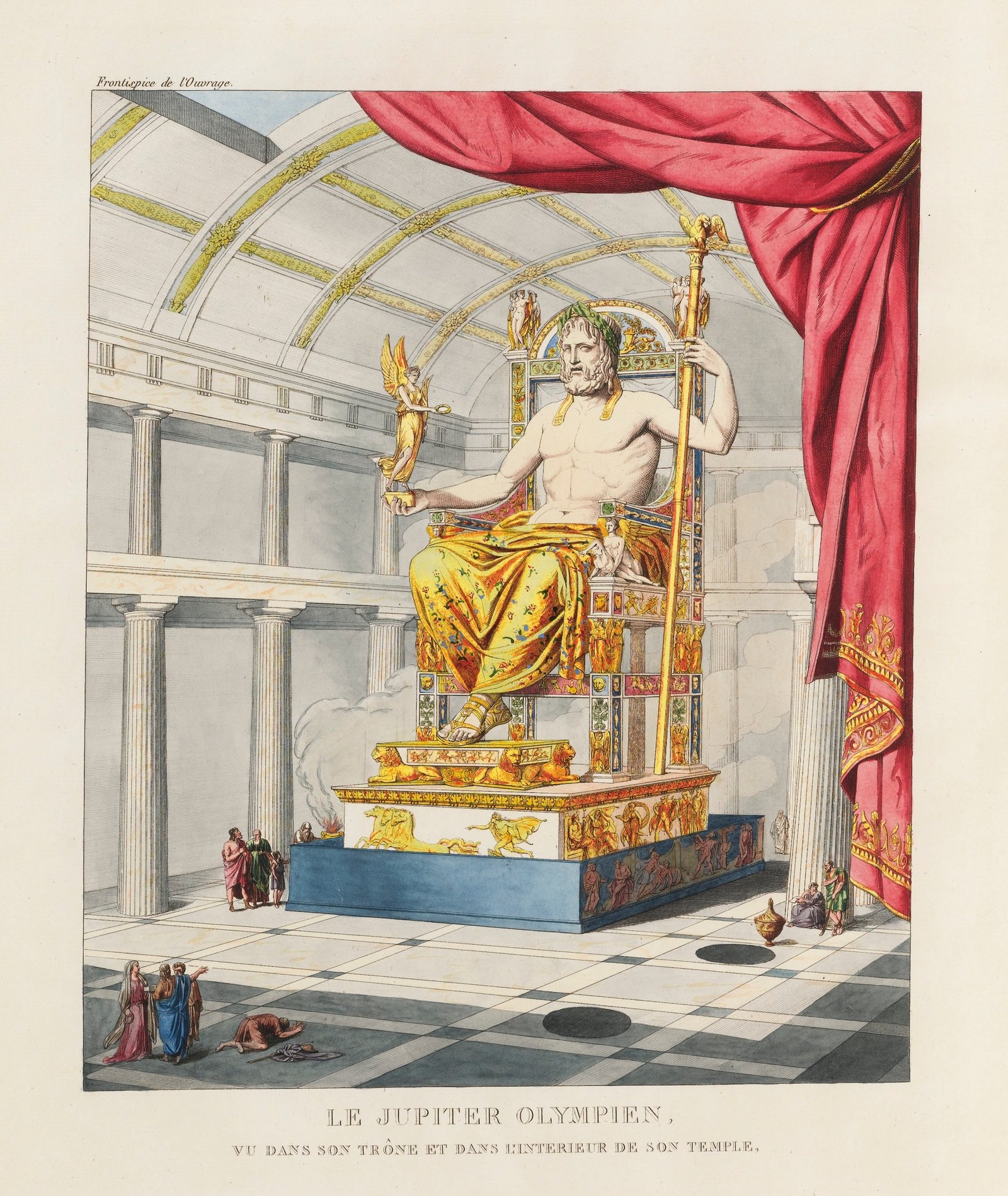
Perhaps the most celebrated feature of the temple of Zeus in the heart of the sanctuary was the great gold-and-ivory statue of Zeus, created by the master sculptor Phidias around 435 BC, shortly after the temple’s completion.
This colossal chryselephantine statue—meaning it was constructed with gold and ivory plates over a wooden framework—represented the pinnacle of ancient Greek sculptural achievement. Nearly twelve metres high, the seated figure of Zeus held in his right hand the goddess of Victory, Nike, and in his left a sceptre topped with an eagle, all while mounted on an elaborate throne decorated with precious materials, mythological scenes, and intricate carvings.
Phidias created this monumental statue—one of the Seven Wonders of the ancient world in his workshop, a building west of the sacred enclosure, opposite the temple of Zeus. The officials of Elis, responsible for the Olympian sanctuary, invited the renowned sculptor to Olympia to create a statue worthy of the recently completed temple. Built between 430-420 BC, the rectangular hall (32 x 18 x 14.50m) matched the exact dimensions of the temple’s cella to facilitate construction of the colossal statue.
The workshop was divided into three naves by columns, with the statue likely positioned in the central nave. Assisted by a group of workers, Phidias dedicated years of labor to the project. He and his craftsmen worked with gold, ivory, glass, and semi-precious stones in the adjacent south wing. Remarkable finds from excavations include clay matrices for the statue’s drapery, ivory fragments, goldsmith’s tools, and a small cup inscribed “I belong to Phidias.“
The finished statue depicted Zeus seated on an ornate gold throne, with ivory flesh and a gold robe adorned with glass flowers and precious stones. After completion, it was transported in sections and assembled within the temple.
Ancient writers described visitors being moved to tears by the statue’s sublime beauty and majesty—the geographer Strabo wrote that if Zeus were to stand, he would break through the temple’s roof.
The statue required constant maintenance; records mention workers who regularly polished and oiled the ivory to prevent cracking in Olympia’s humid climate. A rectangular pool of olive oil was kept in front of the statue to provide moisture and create shimmering reflections.
The fate of the statue remains uncertain. Some sources suggest it was transported to Constantinople in the late 4th or early 5th century AD, where it may have been destroyed in a palace fire around AD 475. Others believe it perished in a temple fire at Olympia around AD 426, its precious materials melted or looted. Either way, this wonder of the ancient world disappeared from history, leaving only descriptions and small reproductions on coins to hint at its former glory.
The statue’s presence turned the temple into much more than a building—it became a symbol of divine majesty, human artistry, and the very spirit of Olympia.
